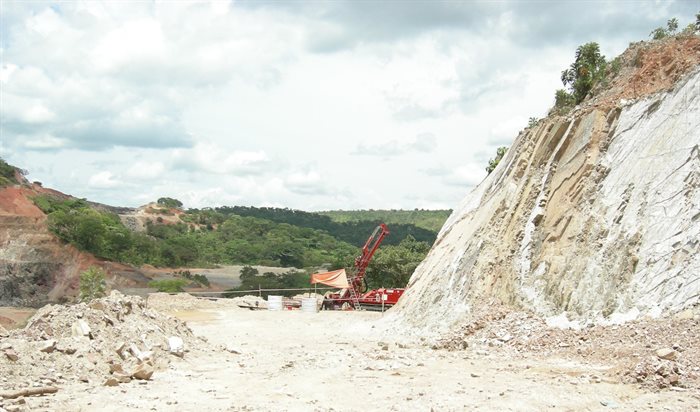
In countries like the DRC, where the mining industry is growing rapidly and being spurred on by the rising demand for battery minerals, the scale of this issue is set to grow. Not only are there more mines opening within close proximity to each other, but they are also steadily mining wider and deeper to follow their respective orebodies.
This all means that, in some instances, greater volumes of water are being pumped to surface, with impacts both on the aquifers from which the water is abstracted and on the surface environment into which the water must now flow. These impacts can affect a range of stakeholders in the respective catchment area, from nearby mines and industry to communities and farmers, as well as the parastatal water distribution company.
Among the results of dewatering is the potential lowering of the water table below the existing borehole depth of other users, which would force them to drill deeper or elsewhere to regain their groundwater access. Where resources are not available to invest in deepening boreholes, there could be serious consequences for community health, livelihood and even employment opportunities.
Discharge from mines is the other side of the coin, where large volumes of groundwater are being pumped into river systems. This often has the effect of raising water levels in rivers – presenting a significant risk for subsistence agricultural activity, which is often conducted as close to a water source as possible. There is also the possibility of fine material from mines accumulating and impacting the soil quality of arable land.
There is already a legal requirement for mines to monitor and maintain water quality, and many mines also contribute to the water supply requirements of local communities. What is missing, however, is a broader catchment-level view of the water resources that are shared by all users. This aspect of water management can be best achieved by taking a water stewardship approach, and working with other stakeholders in a catchment to gather, share and use data more effectively.

Even when mines plan for their own water use, the data at their disposal is often lacking in detail and accuracy. For instance, it is difficult, if not impossible, to know the total water volumes being abstracted by neighbouring industry within the vicinity of a mine – or how the consumption by other users will affect what the mine will be able to draw. There is sophisticated software to generate water models, but the results will only be as good as the available data. When it comes to water management, the picture is frequently a puzzle with most of the pieces missing.
The more fruitful water stewardship approach is for mines within a catchment to create a formal collaboration through a water forum. This would include not just mines, of course, but also communities and other industry representatives. The focus would be on responsibly managing the water resources for all users, but there is a definite benefit to each mine: it helps to manage water-related risk.
Once there is commitment to the concept, a key function of such a forum is to share information related to water such as increases in dewatering volumes entering rivers, water table impacts, availability, modelling and water use. An immediate advantage is to raise the standard and reliability of the groundwater models that each mine needs to plan their future. By sharing the responsibility to gather a wider pool of data, mines can achieve a more realistic picture of water resources and risks.

The forum also creates a platform for ongoing collaboration; for example, where a new mine is opened in the catchment, they too will be expected to participate and to contribute data for the benefit of all. A benefit to such a mine is that existing data for an area could assist their planning – with ESG embedded to help benefit all stakeholders around the mine. This approach also drives home the importance of understanding the cumulative impact of mining, a growing thrust of environmental, social and governance (ESG) concerns. This should overcome any sensitivity about sharing water-related data, as mines move towards more detailed reporting in terms of global sustainability principles.
There are also mine closure issues to consider – such as the result of dewatering activities coming to a halt when mining operations cease. After stakeholders in a catchment have adapted to the impact of years of dewatering, what will happen when the water table starts rising again? There may be significant consequences to consider and plan for.
Embracing water stewardship will also help mines within a catchment to more accurately monitor water for any contamination – and in fact to identify the source more quickly. As mines work towards greater transparency about their impacts, this kind of information will be increasingly vital to prove that mines have effective water management strategies.
With groundwater being very dynamic, it can move rapidly and make it difficult to pinpoint the source of any contamination. This makes it important for monitoring networks to be set up in a way that makes it easier for the source and the solution to be identified – rather than leading to ongoing conflict and suspicion between stakeholders. It is also possible for acidic leaching to occur from historical or closed mining areas, and this also needs close monitoring.
Many of these challenges can be much more easily resolved with a collaborative approach in which each player in a catchment recognises their role as a steward of water resources. A stakeholder water forum is a valuable place to start, with an initial focus on sharing water-related data and developing the water monitoring network to close the information gaps.